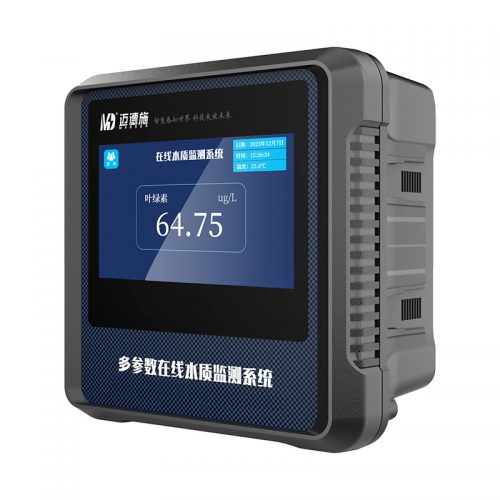measuring principle
The chlorophyll sensor uses the characteristics of chlorophyll A having absorption peak and emission peak in the spectrum to emit monochromatic light of A specific wavelength into the water. The chlorophyll A in the water absorbs the energy of the monochromatic light and releases another wavelength of monochromatic light. The light intensity emitted by chlorophyll A is proportional to the content of chlorophyll A in the water.
functional characteristics
It is based on the fluorescence of the target parameters, which can be identified before the potential bloom causes the impact;
No extraction or other treatment, rapid detection, to avoid the impact caused by the shelving of water samples;
Digital sensor, strong anti-interference ability, the transmission distance is long;
Standard digital signal output, which can be integrated and networked with other devices without a transmitter;
Sensor site installation is convenient and fast, to achieve plug and play;
Simple use, reliable results, interface operation instructions can reduce operation errors;
Set up a visual alarm system to provide important alarm functions;
The controller can realize the wall hanging mounting / panel installation / clip pipe installation;
Sensor power supply positive and negative electrode reverse connection protection;
Sensor RS485 A / B terminal with wrong power protection.
Typical application
Online monitoring of chlorophyll from waterworks import, drinking water source, aquaculture, etc.;
Online monitoring of chlorophyll in different water bodies, such as surface water, landscape water and seawater.R2=0.999
| Sensing technical parameter |
| measuring range |
0-500 ug/L |
| measurement accuracy |
The signal level of 1ppb Rhodamine dye corresponds to the value ± 5% |
| repeatability |
±0.3% |
| resolution ratio |
0.01ug/L |
| pressure limit |
≤0.4Mpa |
| calibration |
Deviation calibration, slope calibration |
| requirements |
The distribution of chlorophyll in water is very uneven, so multi-point monitoring is recommended. The turbidity of the water is less than 50MTU |
| Sensor material |
Body: SUS316L(ordinary version), titanium alloy (seawater version)
Upper and lower cover: POM, cable: PUR |
| storage temperature |
-15° C to 50 ° C |
| working temperature |
0 to 45 ° C (no freezing) |
| size |
Diameter 30mm* Length 223mm |
| weight |
0.55KG |
| level of protection |
IP68/EMA6P |
| cable length |
Standard cable length: 10m, extendable 100m |
Controller parameters
| Model |
MDS-KP500 |
| Display |
4.3 inches, 480*800 resolution, 262K color, IPS screen, wide viewing Angle, with backlight |
| |
Capacitive touch screen with three protection processes (moisture-proof, mildew proof, salt spray proof) |
| Display size |
95.0mm*53.9mm |
| Measuring range |
-99999.0000~99999.0000 |
| Password Protection |
The default password is 0000 |
| Compatible sensor |
Digital sensor |
| Mounting method |
Disk mounting (with chassis), wall-mounted mounting |
| Alarm relay |
2 relays can set high and low alarm |
| Current output |
2 isolated 4-20mA, maximum load 750Q, can be set |
| Communication port |
RS485 Modbus RTU |
| Memory backup |
All user Settings are stored indefinitely in EERPOM |
| historical data |
The storage capacity of 8000 points is recorded at a 5-minute interval |
| Operating environment |
-10~+50℃,0~95% relative humidity, no condensation |
| Storage environment |
-20 to +70 ° C,0 to 95% relative humidity, non-condensing |
| The power supply |
12V±10% |
| Power consumption of the instrument |
less than 6W |
| Instrument size |
144X145X85(mm) |
| Protection class |
IP65 |






